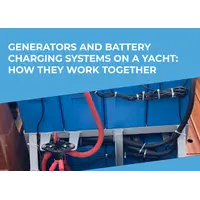In this article we’ll try to give some advice on how you can stand out among competing charter businesses by expanding provided services, improving the interior and the look of the vessel, optimizing the equipment on board, as well as many other ways. All recommendations are based on the personal experience of the topRik team, gained when working with clients of our charter company and using our own SimpleSail fleet in marinas of Croatia and Montenegro, as well as within the framework of brokerage services provided by our marketplace.
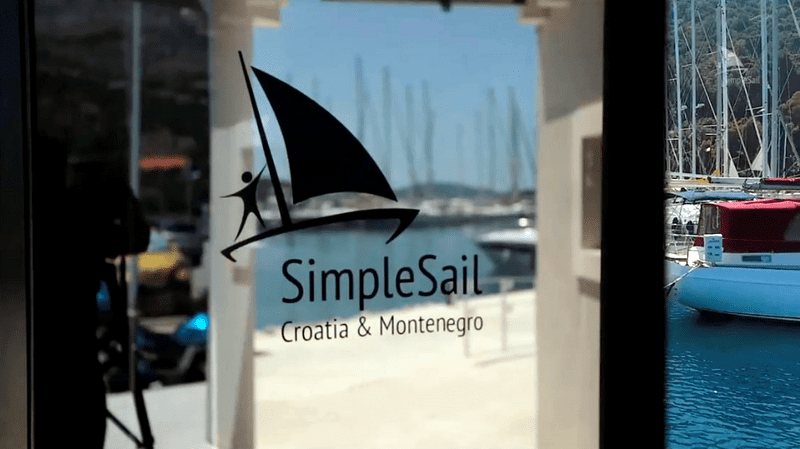
There is an opinion from an executive of one well-known charter yachting company that most privately owned yachts are used for only 10 days a year. The rest is downtime, during which the owner is not exempt from the costs of maintaining the vessel. People with some entrepreneurship spirit, including famous yachtsmen, participants and winners of regattas, have long realized that there is a great way to reduce these costs and even make a profit during these uneventful days - renting the yacht out.
As in any business, there are options, undercurrents and shoals, which we will talk about in future publications. And this article will be devoted to how a yacht owner can increase demand for it and survive among numerous competitors. After all, even if he uses the services of a management company, the yacht must still withstand serious competition.
There are even more risks if the owner manages his yacht independently, offering his services through a platform on the Internet. The opportunity to rent a yacht not from a charter company, but directly from other yacht owners, as well as the opportunity to rent out your yacht according to a convenient schedule, seemed impossible until recently. But today the number of online platforms that provide such services to yacht owners is easily more than a dozen.
All this means that the demand for renting yachts directly from the owner is growing, and this is explained by the fact that private rentals can cost up to 35% less than similar offers from a charter company. But in order for some of this demand to be reflected in the owner's bank account, he needs to work hard and use all his creative talents.
Much in choosing how to prepare a yacht for the season, of course, depends on the type of boat being rented: a racing monohull sailboat, a cruising sailing catamaran, a motor yacht, etc.

What Are the Most Popular Charter Yachts?
The main types of yachts used for charter are the so-called cruise yachts, which can be either sailing or motor monohulls, as well as double-hulled high-speed yachts - catamarans.
Monohull sailboats have much less space than catamarans, even sailing ones. The management of sailing yachts, on the one hand, is more complex, on the other hand, it is interesting and exciting, which means it can attract those who love romance and adventure – the sails, the wind, calm sea and traditional approach.
Statistics from recent years indicate that the number of motor yachts and their diversity on the global charter market already significantly exceeds sailing models, especially monohulls.
Of course, the owners of charter companies are now trying to purchase spacious boats, but there are also clients looking for a monohull sailboat, for example, regatta participants or those who want to master classic yachting. The demand for sailing monohulls largely depends on how you prepare the vessel, in particular, for the start of the regatta.
Technical Side of Preparation
Regardless of the type of boat you rent, its technical preparation should be taken as seriously as possible, since breakdowns during a cruise or in the midst of competition are not the kind of advertising that ensures success.
Preparing a Charter Yacht for a Regatta and Cruise
Participation in racing on a charter yacht is popular at amateur regattas, since professional teams have their own boats, which are often allocated to them by sponsoring manufacturers.
Amateur regattas are a pleasant and interesting alternative to the usual cruise crossings from bay to bay. Therefore, if you rent a racing sailing yacht, you should prepare it in such a way that among amateurs you are considered a reliable renter who contributes to the team’s victory in the race.
By the way, the tips given below for preparing a racing monohull sailboat are in many ways suitable for any sailing yacht, including a cruising sailing catamaran. These tips are based on the topRik team's own experience - our company is the organizer of the Weekend Sailing Series race on J/70 sailing yachts in our region.

Your goal is to ensure that the boat is in such condition that it matches its advertising description.
Deck. This is where the inspection of a sailing yacht should begin. Check the ease of movement of the boom-sheet carriage, as well as the degree of its corrosion.
Next, you need to pay attention to the carriages of the jib sheets and mainsail along the luff, or if you have a mainsail furling system, check the ease of movement of the furling system. Nothing steals as much time on the course as a poorly functioning traveller or inconvenient reefing process. Therefore, you just need to clean all key components from salt and go through them with one of the dry lubricants.
It makes sense to rinse all the running rigging with fresh water, check the furling of the front sail so that the rigging does not resemble steel cables in terms of rigidity, which can do a bad job in a race, leading to overlaps.
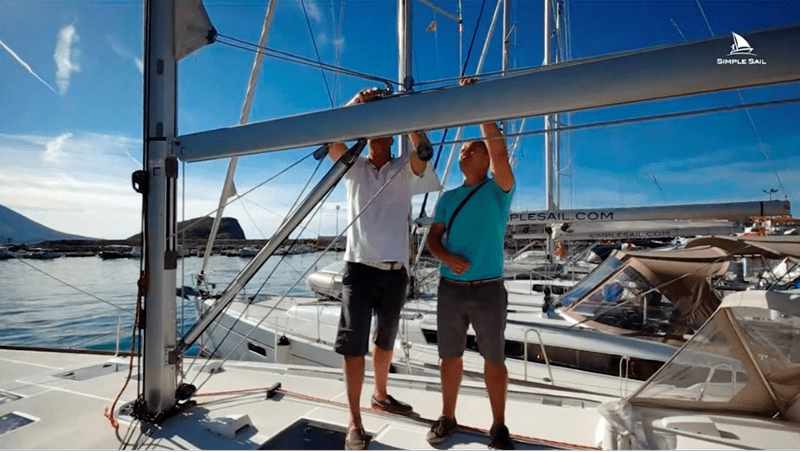
Having completed the inspection and maintenance of the rigging and individual components, you should move on to the sails. Check for the presence of telltails, restore the missing ones: 3-4 telltails are glued to the luff of the mainsail, in the area of each armor. On furled sails, we reduce the length of the telltail by a third. Wool yarn telltails like to snag on seams, so it's best to use thin strips of zeta spinnaker fabric. On the front sails, you can safely use telltails made of woolen threads. They are glued in pairs, from windward and leeward, one pair in the upper part of the sail and two pairs in the middle and lower parts, at a distance of 20–50 cm from the luff. The farther from the luff, the more sensitive they will behave. Along the luff of the front sail there should also be three telltails, glued according to the same principle as on the mainsail.
It is also important to check the condition and integrity of the mainsheet.
The tender should be removed from the deck into the saloon, after deflating the cameras, it can be even left on the shore.
It makes sense to tape off everything that the genoa sheet might get caught on when turning - this can save more than one maneuver! The bimini on the deck should be gone - it significantly impairs the view, and adds extra weight.
Check the functionality of the steering device. Does the yacht react to the steering action instantly or are there delays due to sagging of the steering ropes?
If you want to stand out as a yacht charterer who understands the nuances of racing, you can provide the option of adjusting the backstay tension, and for the genoa sheets and spinnaker, equip the yacht with a barber hauler.
Hull. If it is obvious that the yacht is heavily overgrown, then the loss of precious tenths of a knot of speed can be avoided by inviting a diver to clean the boat for you.

A cheaper alternative would be a piece of artificial grass with two ends attached to it, through which it can be brought under the hull for cleaning.
Jib halyard. On some charter yachts, the jib halyard is not routed through stoppers to prevent unwanted actions by unprofessional crew that could result in the halyard being dropped. It is worth starting it again and checking its tension before starting. A jib halyard that is too loosely padded spoils the profile of the sail.
Travellers. Often, genoa travellers, mainsail headboard cars, and ball bearings move very poorly due to salt build-up. It is necessary to rinse everything with fresh water and lubricate it.
Cleats. The genoa sheet likes to get caught on the cleats and protruding parts of the hatches on the forecastle. It is best to tape off all protruding parts.
Setting up the mast. Go to the mast and look up at it to see if it is straight. Check to see if it is being squeezed into the tack by the wind and if it is bending in the wave.
Labeling. If you have a boat with a furling mainsail, the marks on the boom will be a good help in setting it up optimally. The same applies to brands for mainsail headboard cars. The presence of marks makes it possible to instantly move the car to a new position when changing course or performing a maneuver.
Weight. It is recommended to place the cargo on board in the center of the boat and as low as possible. Check your fresh water tanks and drain any excess as an extra 200-300 kg can have a negative impact on speed and agility.
Of course, a more or less experienced crew will check all these positions before the start, but if already at the stage of delivering the yacht to the renter there are no comments on its condition, this will be an excellent advertisement for you, since not all charter racing boats are so carefully taken care of. This increases your chances for getting regular customers.
The process of setting up any charter sailing yacht, including catamarans and trimarans, follows the same principles. We described this process in more detail in the article Checklist: Yacht Preparation Before the Season on the Hard and Post-launch, taking into account checking engines and other equipment.
Prepare the technical condition of the yacht for clients as you would for yourself. Keep in mind that maintaining a cruise charter yacht will cost several times less than a boat intended for a regatta.
With or without Skipper, with or without Training
The choice that every yacht charterer will definitely face is whether to provide a boat with its own skipper or to trust the documents confirming the professionalism of the employer’s crew.
If the owner himself acts as skipper, his risks are limited to his competence level. He needs to have a Bareboat Skipper qualification and other permitting documents required by the country providing charter services. The same applies to the skipper hired by the owner.
In this case, the owner has the opportunity to expand the services offered by announcing that charter participants can, at their request, book an itinerary on which they will be introduced to the basics of navigation, as well as yachting equipment. This will be interesting for novice yachtsmen. Of course, they will not be allowed to “steer”, but all techniques will be demonstrated, including maneuvering when mooring and unmooring, as well as the principles of working with sails, if the yacht is sailing.
Experience shows that such introductory cruises are popular among those who want to get involved in sailing on their own boat, but are still wondering whether to study at a yachting school and become a certified skipper.
This is a very reasonable decision, since a closer acquaintance with reality can make adjustments to the romantic aura that has developed around the hobby of yachting. Steering a sailboat is a rather complex process and hard work, and the apparent simplicity of operating a motor boat also hides the need to know the hardware and work with your hands. The owner of a charter yacht or the skipper hired by him can introduce his clients to all these subtleties. They will be grateful to you since buying their own yacht and training for it will be easier for them after such experience.
Of course, if you have a special permit to teach yachting, you can devote the entire duration of the charter voyage to it, conducting theoretical lessons at anchorages and practicing at sea. Of course, the “vacationers” should know what they are signing up for: they will only get to have a vacation in-between lectures.
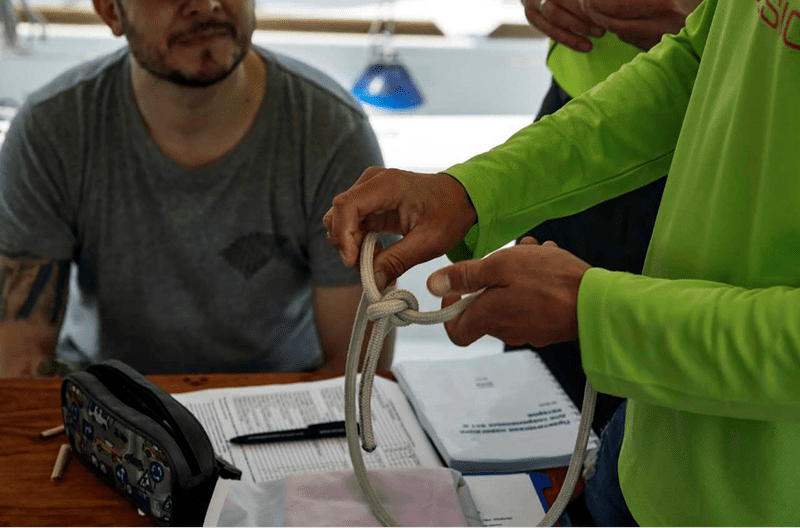
In general, those who are planning charter services on the water should understand that success largely depends on the quality of your communication with clients. The image of a stern sea wolf who treats land-based representatives of humanity with disdain does not fit here. The closest image you should go for is that of an experienced manager of a small luxury hotel, and the most important quality that is required from you is focus on the customer.
Everything for the Client
Your income depends on your ability to fulfill the wishes of your clients. This means that you must quickly respond to rapidly changing fashion: this season everyone is rushing to regattas, and next season they are actively and massively into yachting lessons.
Of course, ideally, based on an analysis of possible services, select those that you can afford, based on the possibility of investment, the types of boats that are rented and the level of your training, as well as the possibilities of hiring a crew.
The best option is to provide exclusive, unmatched services. But even if you can’t arrange for your client to visit Monaco for a few days to watch Formula 1, you have plenty of other opportunities to attract lovers of seaside recreation and entertainment to your yacht.
Such opportunities could be a unique guided cruise route when leaving ports, a diving course on coral reefs, or organizing water competitions for children and teenagers while anchored in a shallow bay.
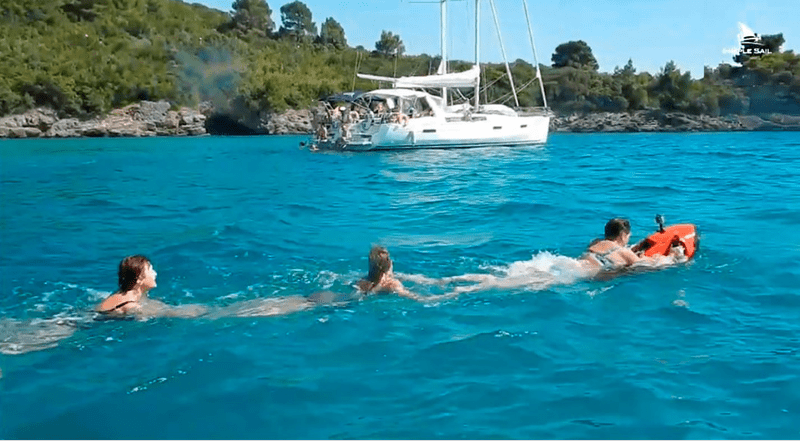
The options depend on your competence, creativity, the condition of the boat, the region where you are based and the ability to invest in additional equipment: boats, jet skis, boards, jet scooters, seabobs, etc.
But the most common types of services for which a yacht is rented can also provide income in between exclusive services or even instead of it. It’s just that charter services in yachting have become so affordable that now few people can be surprised by events that just a few years ago were considered unique among middle class clients:
- engagement or wedding during a cruise;
- birthday on a yacht;
- celebrating another anniversary of a significant date for a family or company;
- corporate events, including going ashore for a picnic or water competitions (boards, kayaks, skis, etc.);
- search quest in the sailing region with navigation training;
- quest room on the boat itself (it is advisable to use a catamaran, since there is more space there);
- holding conferences and seminars (for example, on environmental topics) with a buffet;
- an award ceremony for company employees, college students or any sports team;
- introducing the team to new managers of various ranks, etc.
And organizing sea fishing trips for its clients is always popular. Of course, if the yacht is specially equipped for this purpose and has enough space in the cockpit or in the bow. So even a small motor yacht can recoup your maintenance costs if you decide to charter it.

Choice of Region
The possibility of expanding services beyond cruises largely depends on where the yacht owner plans to be based.
The ideal region for commercial yachting is the Mediterranean. Southeast Asia and the Caribbean have problems with generating stable profits due to complex logistics. As topRik's experience shows, the most popular countries that combine good infrastructure and transport accessibility are Croatia, Montenegro, Greece, and Spain. Natural disasters of recent years have made negative adjustments to Turkey's reputation as an ideal region.
It is important that the location conditions allow you to do what is defined in the business plan. For example, it is difficult to teach navigation along a monotonous coastline; only complex waters with many harbors, islands, and ship traffic are suitable for these purposes.
If the yacht owner initially planned to engage mainly in regattas, then he should be based on islands in the Mediterranean Sea (for example, Mallorca) so that he can easily reach the race site.
One of the main problems for a ship owner is the extension of the season. Even in comfortable conditions in the Mediterranean, it is difficult to keep a yacht operational for more than 6 months; tourists usually come from May to October. In this regard, many owners of yachts and yacht companies are trying to take their vessels out to the Atlantic in the fall and winter. As a result, the ships bring profit to their owners for about 10 months a year.
Participants in the commercial yachting market surveyed by Forbes agree that in a good situation, the owner of the vessel can count on income of 15-20% of the cost of the yacht per year in the first 4-5 years of operation, then they decrease quite sharply. After this, the best points of the business plan will be investments in repairs - about another 10% - and sales on the secondary market. The deal can be called successful at a price of 60-70% of the original cost.
Thus, over five years, the yacht owner can receive a net profit of approximately 25% of the invested funds. However, for these calculations to come true, a lot of effort will be required, although not nearly as much as in, for example, a restaurant business.
We hope that some information here was helpful - topRik team wishes that your efforts bring you a full renting schedule on all of your boats throughout the season.
By the way - our specialists are ready to help you in the proper preparation of a yacht of any modification. The experience of the yachtsmen who form and maintain our SimpleSail fleet, as well as the material and technical structure of topRik marketplace, allows us to provide at a high professional level the full range of services for registration, insurance, repair, maintenance and parking of all types of boats: sailing and motor, monohull and multihull, including boats and RIBs with metal hulls.
We are also ready to take over the management of your boat if you wish to rent it out.
Call the specified phone number, use the website’s feedback form or send a message to [email protected].



